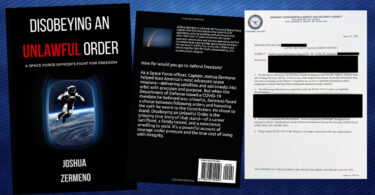By Scott McQuarrie, USMA ’72
President, Veterans for Fairness & Merit
Ten reasons why the use of identity preferences under the guise of “inclusion” bad policy for the military.
Racial preferences:
#1:
Blindly presuppose victimhood/disadvantage for minorities merely because of identity characteristics (e.g., skin color), and an advantage for non-minorities merely because of non-minority status, in the absence of evidence of either. They are thus inherently inaccurate in identifying and admitting the best-qualified and most deserving applicant.
#2:
Inherently lower standards to facilitate selection of the preferenced individual over the non-preferenced individual.
#3:
Reinforce differences instead of directing focus on racial neutrality (“colorblindness”), assimilation and adoption of unit norms such as subordination of self/sub-group identities, and unwavering loyalty to all teammates, regardless of identity differences.
#4:
Demean high performing minorities who, by their demonstrated performance, deserve selection/advancement, but where the “affirmative action” environment makes it impossible for anyone (including subordinates) to know whether a promotion was earned by demonstrated performance or, rather, was a “diversity promotion,” compromising the presumption of merit that should follow from selection.
#5:
Discourage high performing non-minorities, who, merely because of their non-minority status, lose confidence that they will be treated fairly (which is highly offensive and intolerable, particularly for high performers), some of whom choose to leave rather than take that risk.
#6:
Breed resentment among those non-minorities who stay.
#7:
Result in less than the best-qualified, most competent persons being selected as leaders, when others who have demonstrated higher levels of competence and performance are not selected merely because of their non-minority status.
#8:
Erode trust in the integrity of superiors (and the chain of command supporting them) who conceal their use, who disingenuously mischaracterize functional quotas as “goals,” and who deny the lowering of standards usually necessary to achieve composition “goals”; trust in leaders is a sine qua non for combat effectiveness – warfighters, especially when in difficult circumstances, don’t respond as effectively to leaders whom they distrust.
#9:
Erode morale and trust in the organization that is asking them to put their lives on the line; warfighters want the best leaders that can be found to get them on and off the battlefield to accomplish the mission with minimum loss of lives and equipment; when they believe they are being led by a “diversity hire” instead of the best qualified person, morale and organizational trust suffer.
#10:
In sum, they reduce unit effectiveness and increase risk of mission failure/casualties by:
- lowering standards, thereby reducing leader quality,
- causing highly competent, non-minorities to leave,
- creating division,
- eroding trust,
- lowering morale, and
- compromising unit cohesion








Leave a Comment